Author: Laura Jüristo
How about a trip to the world’s end? Stood atop a cliff with the wind in your hair, you will find all your worries are forgotten in some faraway land, with the sea separating you from them. Welcome to the Estonian islands. All mossy dry-stone walls, windmills and sheep grazing in tall grass – the isles have a lot in common. This is equally true when it comes to leading life at a calm tempo, maintaining a healthy sense of humour and continuing to live in sync with the surrounding sea. Yet each of the Estonian islands will strike you with their uniqueness – be it their nature, people or their clothes, the isles have character.
You will reflect on this as you lay your head to rest after a day’s worth of adventure or sweet idleness. To make sure your experience doesn’t stop behind the door of your temporary home, why not stay at some accommodation that matches the island’s own uniqueness? Here, we’ve done the work to select the very best characteristic stays on the islands of Saaremaa, Hiiumaa, Muhu, Vilsandi, Abruka and Ruhnu. There’s one thing they all have in common – you’ll be falling asleep to the sound of the waves.
Kusti Holiday Home on Vilsandi
Vilsandi is Estonia’s western-most island. Located within the national park of the same name, Vilsandi is one of roughly 150 islands that are on the natural park’s territory. Home to unique wildlife, plants and even a few humans, Vilsandi enjoys a maritime climate, which tempers the winters and assures the most days with clear skies of anywhere in the whole country.
These are ideal conditions for hiking enthusiasts, who will find an abundance of walking trails and camping spots in the national park. If there’s a storm, campers can find shelter in an information hut by the harbour, but if you are looking for the cosy comfort of domestic warmth, then head to Kusti Holiday Home. Three rooms with twin beds are nestled in the wooden house, overlooking a garden. Enjoy your breakfast in the light and airy pavilion, learn to smoke fish or lounge on the beach with your favourite book. Chat the evenings away around a bonfire with locals and don’t forget to wash off a hard day’s travels in the adjacent sauna. Do as the locals do and cool down by jumping in the sea or the snow – whichever the weather allows.
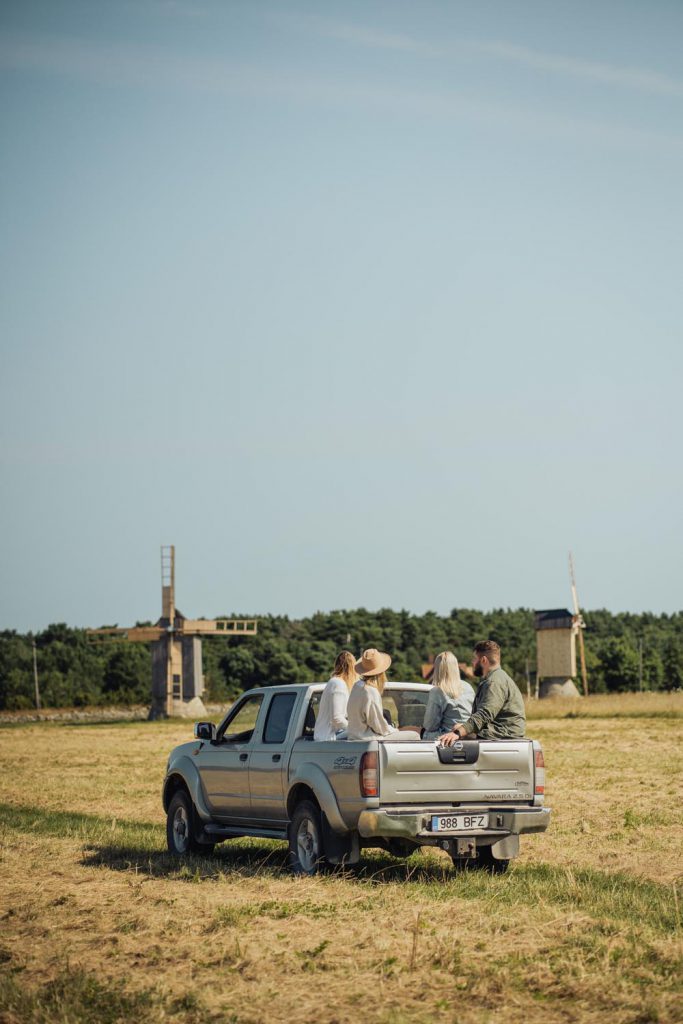
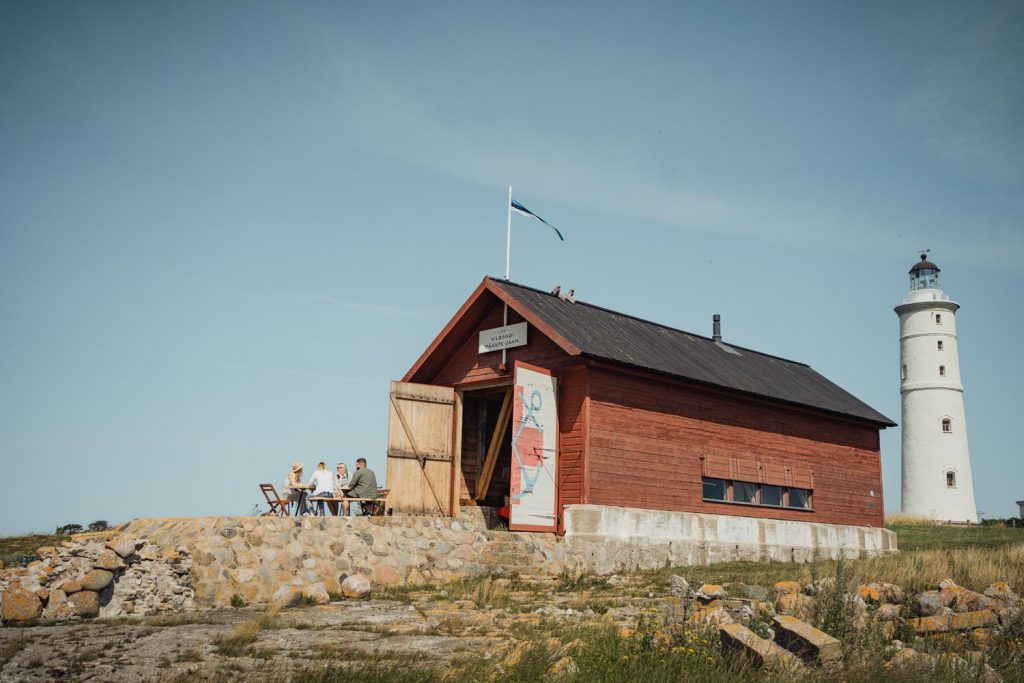
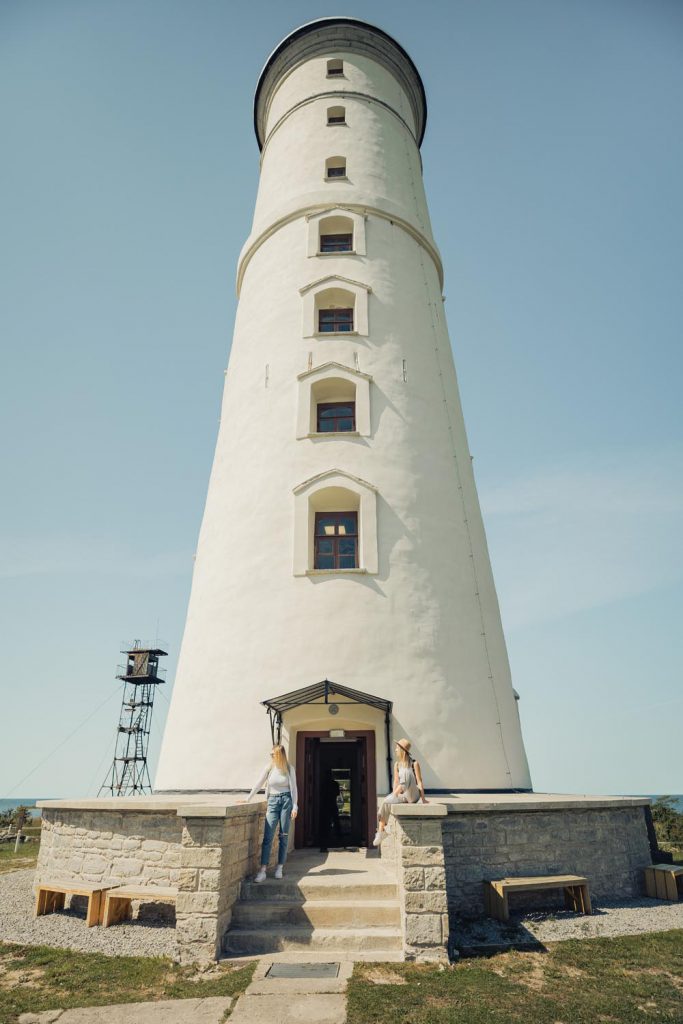
Hoping to discover some of the island’s hidden pearls, but don’t know where to start? Ask and you shall find out. Kusti Holiday Home’s staff will set you up with a local guide, well versed in Vilsandi’s secrets, and with bikes if need be. Take part in seal-watching trips or boat trips that head to see massive flocks of birds on some of the national park’s islets. Diving trips are a delight for marine enthusiasts. You can, however, choose to sit these out and simply enjoy the smooth and slow rhythm of life right at the heart of the island, at Kusti Holiday Home.
Open from spring to autumn, exact dates may vary.
More information: www.travelestonia.com/en/vilsandi/kusti-turismitalu-vilsandi/
Üügumetsa treehouse on Muhu
On the northern coast of Muhu island, millennia-old layers of rock sit atop each other, forming the cliffs of Üügu bluff. The 300-metre-long, natural formation combines the islands biggest caves and a clifftop with a close-up view of the sea. Cattle, sheep and horses graze in the low grass that has become uncovered by the receding sea over the centuries.
There is no better place for enjoying the silence and unique, lunar-like landscape of the bluff than the Üügumetsa treehouse. Nestled between the tops of pine trees, the second-storey bedroom overlooks the sea through floor-to-ceiling windows. The downstairs kitchen–living room is remarkably cosy for a room with no walls. A living tapestry of pine trees and junipers surrounds you as you curl up on the couch after a long day of leisure. Just make sure to put away any food before you head off to sleep. Muhu’s wildlife is your nearest neighbour and will not turn down a free dinner. Don’t worry however – rabbits, foxes, deer and moose are no threat to humans.
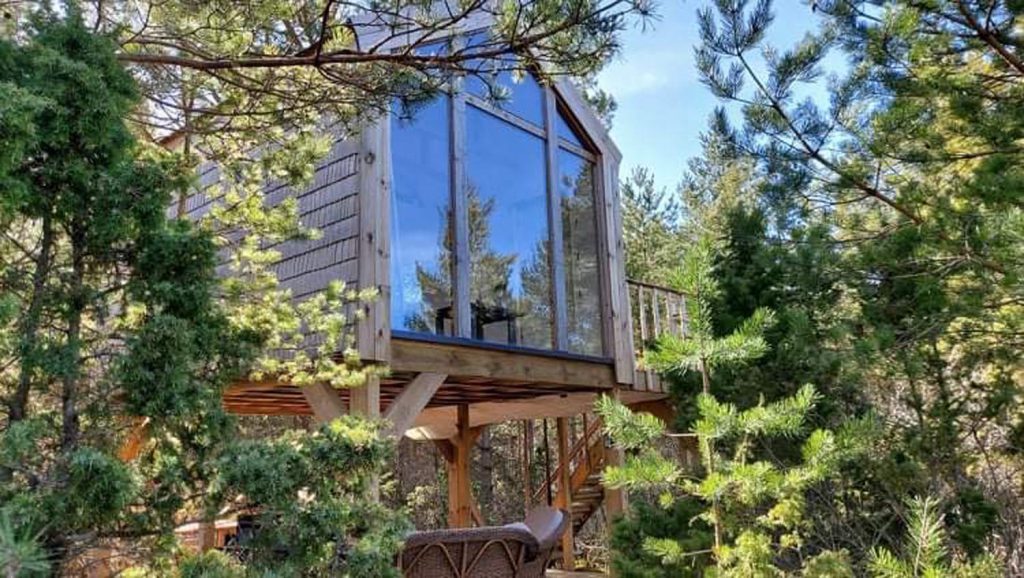
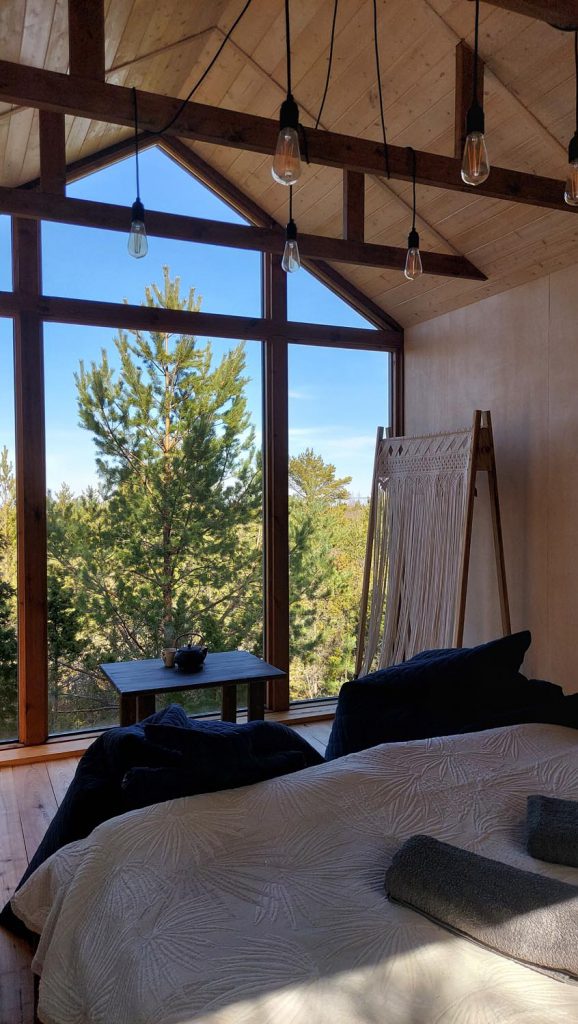
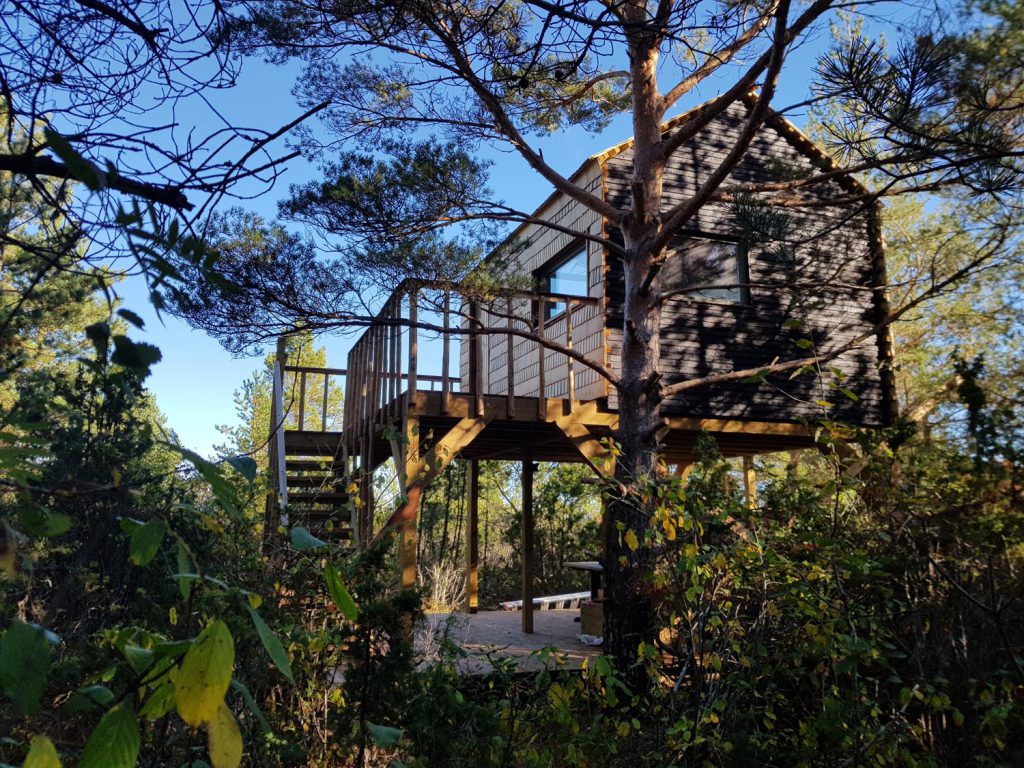
Muhu is known as the island where time rests. If, however, you need a real wake-up then rent bikes from the treehouse owner or paddleboards from Muhu SUP. Both by land and by sea, Muhu will reveal many of its secrets to you at its own pace. On clear days, make sure to count the islets visible from the Üügu clifftop. You might even be able to spot the south-eastern tip of Estonia’s second largest island – Hiiumaa.
Open from spring to autumn, exact dates may vary.
More information: www.visitestonia.com/en/uugumetsa-treehouse
Dagen Haus on Hiiumaa
The Dagen Haus Guesthouse is a former manor complex, located right by the seaside on Kassari island. As indicated by its name, the guesthouse carries Swedish roots, which are reflected time and again in the island’s culture. Grand stone buildings from the 1840s make up most of the complex and an additional wooden straw-roofed cottage welcomes those looking for more privacy right by the sea. Both small and big groups will find their perfect set-up at Dagen Haus.
Whether you arrive by plane, ferry or car, the staff of Dagen Haus will make sure your arrival is smooth. With the right crispy winter weather, you can even make your arrival along Europe’s longest ice road. The iced-over sea welcomes skaters under an open sky and the mansion’s impressive winter garden overlooks the snow-covered manor garden throughout the season. Largely inspired by local produce, the Dagen Haus kitchen will nourish you with delicious food throughout the year.
As the sea thaws in spring, fishermen head out for the first catch and visitors are welcome to join them. You can either take the caught fish with you or learn to cure it with smoke in the guesthouse’s oven. If you appreciate good meat, then make sure you also buy some Dagen organic beef or lamb meat to go. Whatever you prefer, Dagen Haus will have you covered.
Open all year round.
More information: www.dagen.ee/en/
Ohessaare windmill on Saaremaa
Reaching the largest of the Estonian islands from Kassari is easy. Catch the ferry at Soela and you’ll be on Saaremaa in an hour. If the winds blow in your favour, then maybe even less. The people of Saaremaa have a close relationship with the wind, having harvested it for centuries – the windmills of Angla will let you see how from up close, but if you truly wish to get a sense of the special feel and structure of a windmill, then head to Ohessaare.
The windmill of Ohessaare stands on the western shore of the Sõrve pensinsula – the long stretch of land, which until not so long ago was an independent island. The two-storey structure houses guests right by the sea, with a view over the small bay and open sea from massive doors on both floors. Just a few metres away, a small cafe welcomes the windmill’s guests and other travellers throughout the summer. That said, you will probably encounter more sheep than people in this remote little haven.
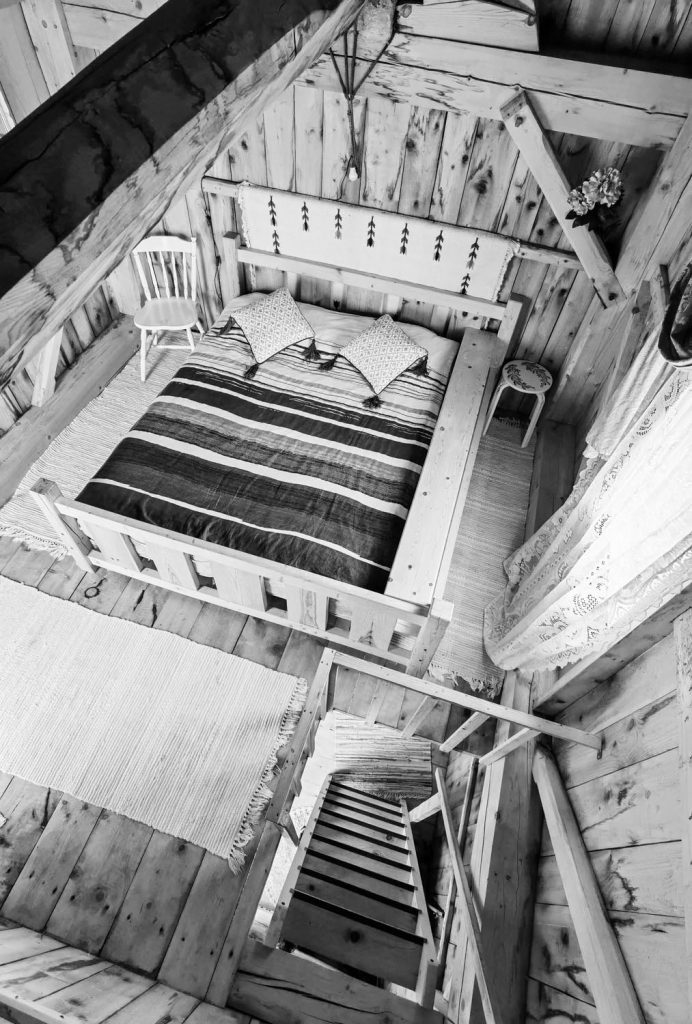
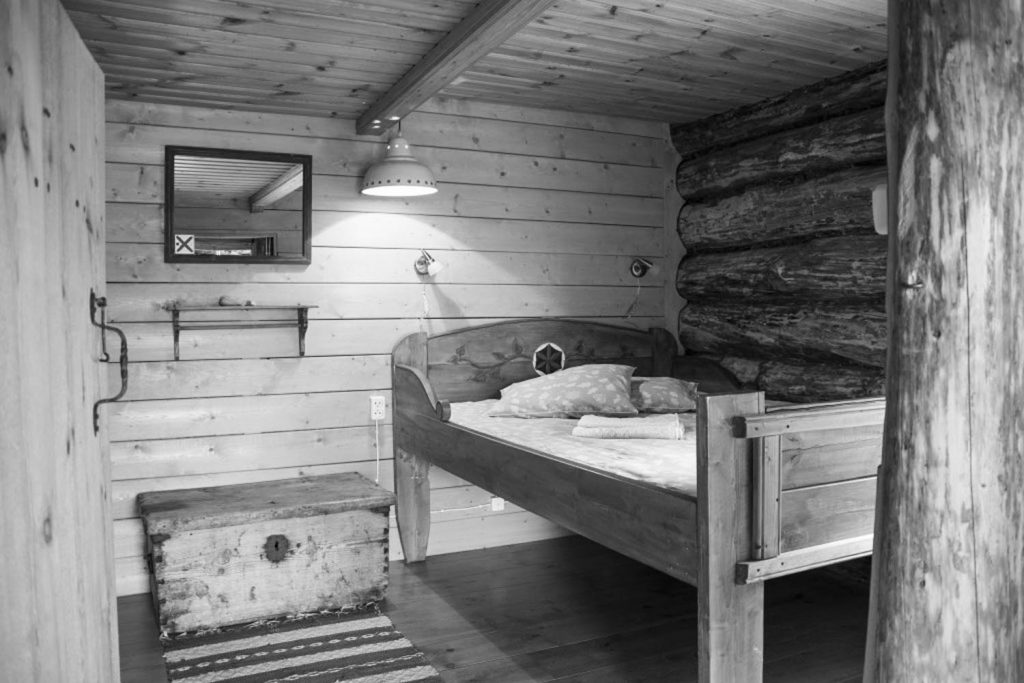
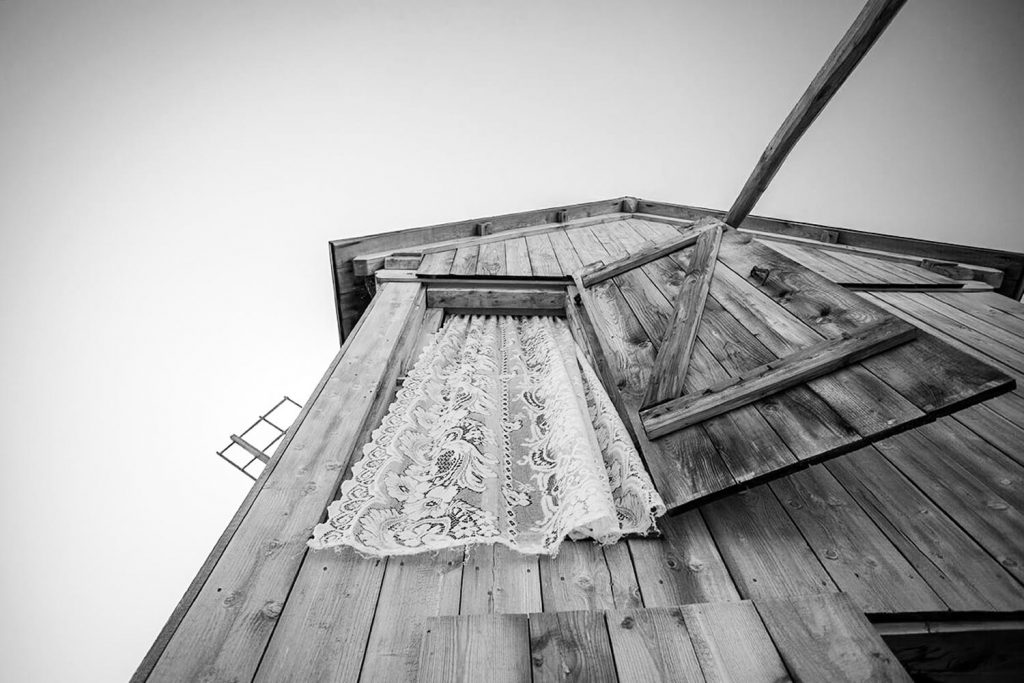
Ohessaare windmill’s surroundings make for a wondrous seaside vacation. Exposure to the open Baltic Sea has rendered the shoreline diverse, exposing a great number of fossils in the Ohessaare cliff face. Ancient remains of corals, reptiles and seashells can be found all across the shoreline and in the horizontally layered sediment strata. In addition to these natural miracles, human-built stacks of rocks and pebbles adorn the coastline and invite you to leave your mark as well. In the vicinity you can find both the Sõrve lighthouse, which sits at the very end of the peninsula, and the sandy beaches of Mändjala. As you look out to the sea from Mändjala, the waves barely manage to hide the next of our islands – Abruka.
Open during summer. Exact dates may vary.
More information: https://www.saaremaatuulik.ee/en
Vahtra Tourist Farm on Abruka
From Roomassaare harbour, Abruka can be reached in a number of season-appropriate ways. For most of the year, the small ferry leaving every other day will be your best option, but given the right winter conditions, the 5-kilometre walk can also be undertaken by foot. Regardless, with each metre advanced, your worries will be left further behind as you make your way to the relaxing island of Abruka.
Although just 8.8 km2 in area, the island fits in a great deal. Home to an old broadleaf forest, rare for the Estonian islands, Abruka boasts many protected plants, including orchids and irises. This is the perfect place for an island safari, where you can go hunting with a camera and, with any luck, you might capture red deer, moose and Scottish Highland cattle. Birdwatching towers are ideal for observing the flocks of diverse sea birds as they nest or pass over the island’s waters. If you manage to cover Abruka itself, then the islets surrounding it will provide continued discovery.
Who better to make you feel at home in this natural haven than the island’s caretaker? Vahtra Tourist Farm’s host is precisely that man. Located right by lush forest, Vahtra combines a guesthouse and two-person cabins, which easily house both small and large groups. Thanks to the outdoor kitchen and fireplace, evenings naturally end up huddled by the fire. Both a sauna and a hot tub are available for relaxing after a day spent discovering the island, or you might prefer a serious session of volleyball on the nearby court. The host family is there to make sure you don’t miss out on any of the island’s treasures, and tours are provided by the island’s caretaker himself.
Open all year round.
More information: https://www.visitestonia.com/en/vahtra-tourist-farm-on-abruka-island
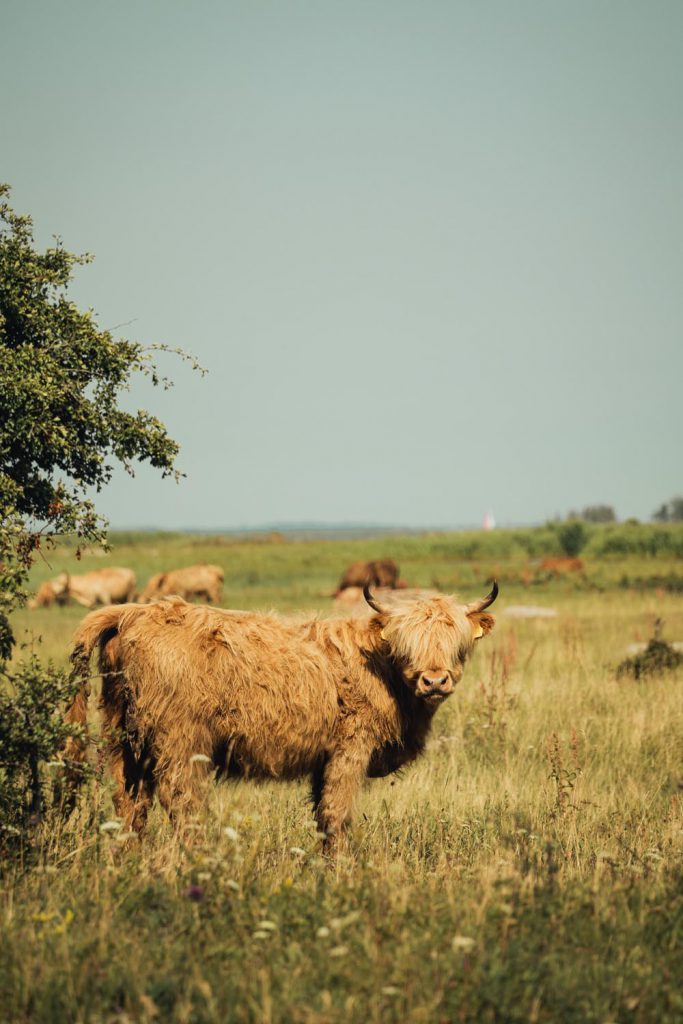
Liise Farm on Ruhnu
The southernmost and by far the most remote of the Estonian islands is Ruhnu. With a unique culture and rhythm, the small island carries signs of first human activity from as early as 5200 BC, left most probably by early sealhunters. This ancient profession has declined in popularity ever since, but luckily not due to of a lack of seals. If arriving to the island via water, you have good chances of encountering these curious creatures – especially because the trip takes a few good hours from both the other islands and the mainland.
At the centre of Ruhnu stands the village of Ruhnu. And at the heart of Ruhnu village is Liise farm. The farm complex, which consists of several dwellings and a small shop, has been welcoming visitors since 1999. In total, Liise Farmhouse can accommodate over 30 people in cosy and distinctive buildings, several of which are around a hundred years old, with thick and low thatched roofs. Whether you come in a large group or a small one, you won’t get bored at Liise Farm or Ruhnu for that matter. The hosts organise tours, local handicraft workshops and excursions. History buffs, nature lovers and cinephiles will find a way of getting to know the island to suit their tastes. When you leave the farmyard, you will near inevitably come across Estonia’s oldest wooden church, the lighthouse designed by Gustav Eiffel as the rumours say, and with a bit of luck the women of Ruhnu in their colourful folk costumes. It’s also understandable if you don’t feel like leaving the farmyard at all. In this case, you can cool off in front of the cosy sauna house at Liise Farm, gaze at the starry sky and reflect back on your island trip.
Open all year round.
More information: https://liisetalu.ee/en/